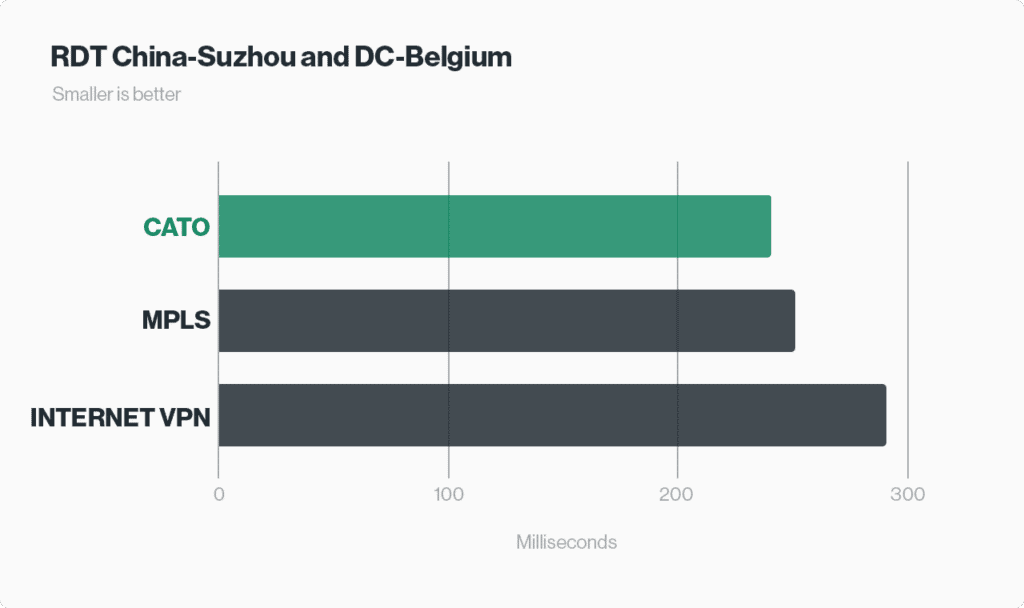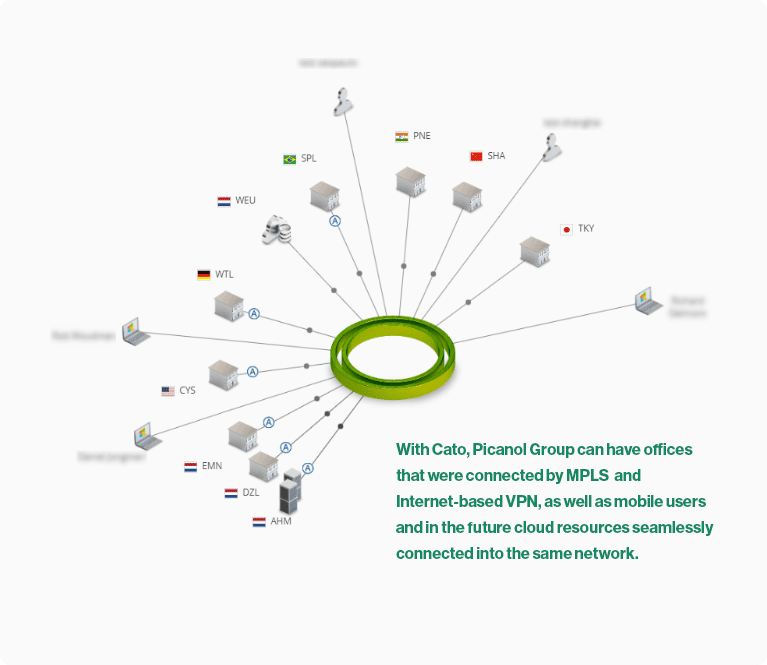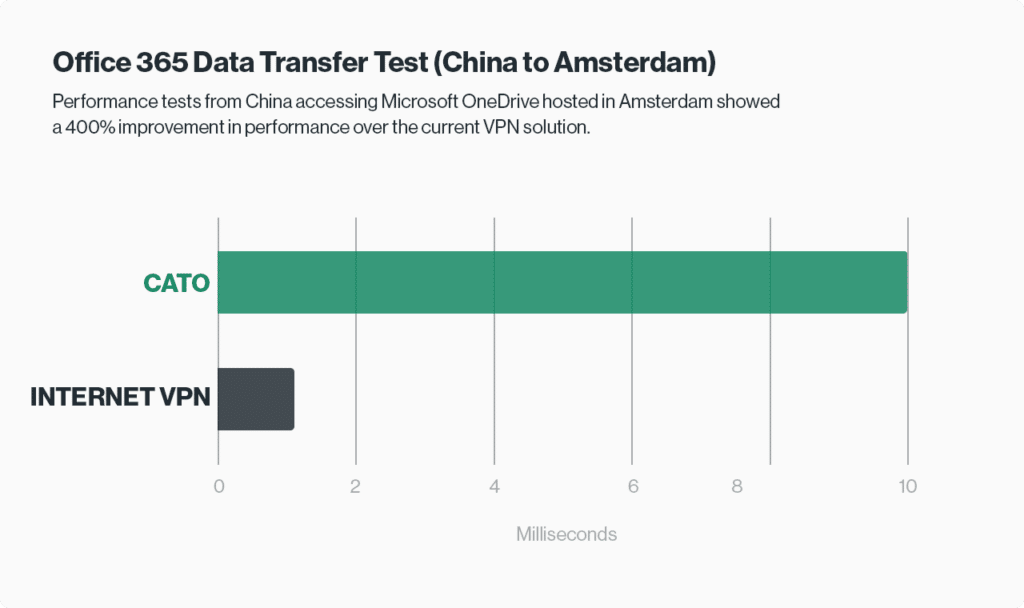Manufacturing
Picanol Group Weaves Better Network Connections, Reduces Costs with Cato SD-WAN
Picanol Group Was Looking for New Technologies to Address Networking Needs
With operations spread across the globe, Picanol Group experienced varying levels of network performance and reliability. With the MPLS contracts expiring, the company had the perfect opportunity to see if newer technologies could better support its current operations and future plans for cloud computing.
Like many other enterprises, Picanol Group had a hub-and-spoke network connecting its global locations, with the hub being in Belgium. The company’s major sites in Belgium, China and Romania had MPLS circuits, and all other smaller branches used Internet-based VPNs to access the company network. Internet access for these smaller sites used a local breakout through a firewall. The firewalls also established point-to-point connections for the sites.
The company set up a failover configuration using the Internet and the MPLS connections. If an MPLS circuit were to fail for some reason, the site could cut over to the broadband circuit and use VPN to stay connected to the network. Failover was critical to support Picanol’s business critical ERP and CRM applications in the event of an MPLS outage.
Cost was one aspect of our interest in alternatives, but mostly we wanted to know if there were new technologies available to address our networking needs
The WAN configuration was working for Picanol Group, but when the time came to renew the MPLS contracts, they opted to look at networking alternatives. “Cost was one aspect of our interest in alternatives, but mostly we wanted to know if there were new technologies available to address our networking needs,” says Bart Lagast, Senior Systems Engineer responsible for network, security and messaging.
Lagast had been reading about SD-WAN and thought it could help solve some problems for Picanol and prepare the company for future needs. The cost of the three MPLS connections was already rather high and adding more circuits to improve performance in the local sites would be cost-prohibitive. In addition, the performance of the IP VPN in a China branch was troublesome, with the Chinese national firewall causing a lot of delay and packet loss. Connectivity in Indonesia was problematic as well. Regional differences with the telcos resulted in connectivity issues at various local sites.
A POC with Cato Proved that Picanol Group Could Improve Performance While Lowering Costs
Lagast selected two SD-WAN solutions for a proof of concept (POC) trial. “We investigated which SD-WAN vendors were the best for us in terms of the solution they provide, and we came up with two—one of which was Cato, of course.”
One of the most important selection criteria was that the SD-WAN have a point-of-presence in the locations where Picanol is active, especially China and India. “The geographical spread of the POPs was critical for us,” says Lagast.
Lagast did an estimate of the cost of the two SD-WAN solutions to cover all of Picanol’s sites and the pricing differential was quite stark. Cato’s solution was up to half the cost of the other vendor’s solution. “It was quite a substantial difference for essentially the same service,” says Lagast.
The implementation was swift and we had very good support to set up the POC
Picanol Group began a POC with Cato, doing a deployment in the three main sites with a VPN to the Cato POPs from Picanol firewalls. Using the existing firewalls made the POC process easy. Lagast says the engagement with Cato, from a technical and sales perspective, was a very good experience. “The implementation was swift and we had very good support to set up the POC.”
The tests showed that despite costing so much less, Cato latency compared to MPLS and in fact was slightly better with a 10% to 20% reduction in delay in China and Romania. The additional bandwidth available with Internet connections meant that Picanol Group could worry less about maxing out a circuit’s capacity.

Declaring the Cato POC a success, Lagast canceled his planned POC with the other SD-WAN vendor. He didn’t see the need since Cato’s solution worked well and the cost was so much less than the other solution.
What Picanol Group likes most about Cato
“I like the flexibility, for sure,” says Lagast. Cato offers so many different services, such as connecting local clients to the network and creating a connection among local sites. Lagast really appreciates the ease of making different connections through Cato’s network.

He also finds the helpdesk and troubleshooting capabilities via the Cato console very helpful. “When there’s an overarching problem, the support we get from the helpdesk and the Cato engineers is very good. I would put Cato in the top 10% of experiences I have had with helpdesks.”
Looking Towards the Future: Security, Mobility, and the Cloud
The sites participating in the POC became phase 1 of the actual deployment with Cato appliances. Phase 2 will be ad hoc connectivity of Picanol’s other locations as they need the network’s functionality.
To date, Picanol Group has focused on its connectivity needs and hasn’t yet explored all the security features the Cato Cloud provides. Lagast noticed that Cato sent an occasional security alert via the console – for example when someone accessed a suspicious website from the Cato network – but security through Cato features hasn’t been a priority yet. Moreover, at this stage, Picanol Group opted to keep the local firewalls, since they are under contract for several more years. “I see the potential to remove those firewalls if we move our small sites to the Cato network in the future,” says Lagast.

Picanol Group also needed a more flexible network to support its planned implementation of Microsoft Office 365 and other cloud applications. To those ends, Picanol tested the Cato mobile VPN offering. “We don’t need it yet,” says Lagast, “but I see possibilities for it once we experience the need for better connectivity from the endpoint after we migrated to Office 365 We need better connectivity from the endpoint.”

About Picanol Group
The Picanol Group is an international, customer-oriented group specializing in the development, production, and sale of weaving machines, engineered casting solutions and custom-made controllers. Today, about 2,600 mills around the world use Picanol machinery, totaling more than 175,000 weaving machines. The company’s 2,300 employees are spread across 15 locations in Europe, Asia-Pacific, China, and the Americas. Production sites in China, Romania, and Belgium were connected by an MPLS network. Most of the other smaller sites connected to headquarters in Belgium across a site-to-site Internet-based VPN; a local site in China used a VPN to connect to the main Chinese site. Good connections to the company’s internally-hosted ERP and CRM applications were critical for business operations.








